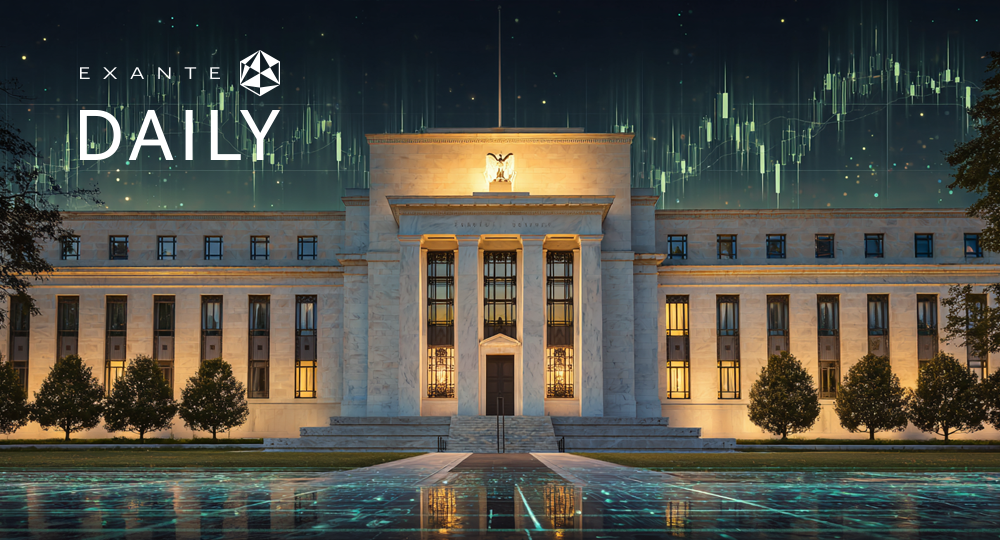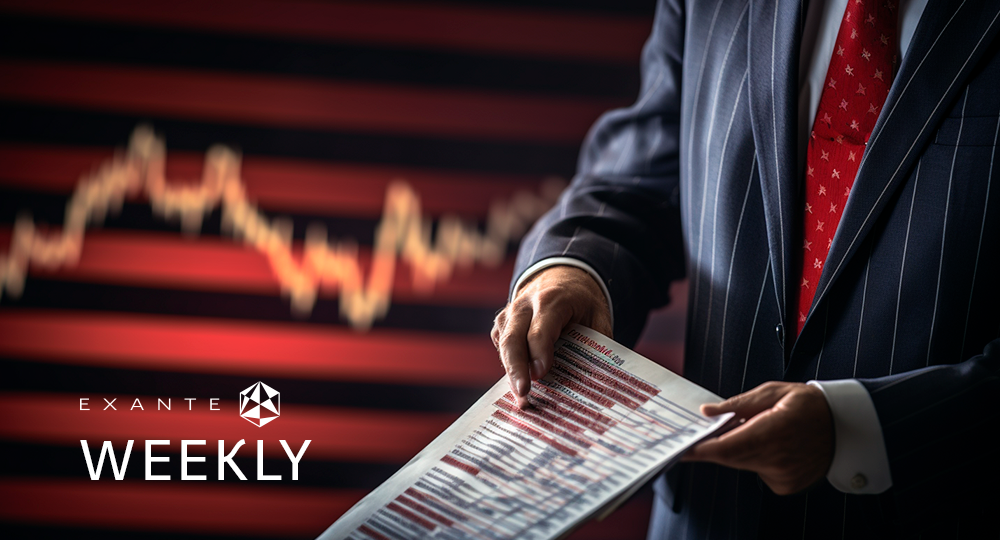
Proceeding with caution?

November was a very buoyant month for markets, with bonds and equities rallying despite global central bank tightening and China’s stringent anti-Covid stance leading to civil unrest. The global economy is cooling as continuing high inflation, energy insecurity, and rising geopolitical tensions, weigh on purchasing power.
- The Fed is fed up
- Europe’s coming recession
- Britain’s getting bleaker
- China’s Covid Cock-up
- Crypto’s confidence wobble
- Key events in December
US:
S&P 500  2.21% MTD and
2.21% MTD and  16.96% YTD
16.96% YTD
Nasdaq 100  5.43 % MTD and
5.43 % MTD and  26.32% YTD
26.32% YTD
Dow Jones Industrial Average  3.42% MTD and
3.42% MTD and  6.84% YTD
6.84% YTD
NYSE Composite  7.00% MTD and
7.00% MTD and  8.06% YTD
8.06% YTD
Europe:
Stoxx 600  6.75% MTD and
6.75% MTD and  9.79% YTD
9.79% YTD
DAX  8.63% MTD and
8.63% MTD and  9.37% YTD
9.37% YTD
CAC 40  7.53% MTD and
7.53% MTD and  5.79% YTD
5.79% YTD
FTSE 100  6.74% MTD and
6.74% MTD and  2.55% YTD
2.55% YTD
IBEX35  5.11% MTD and
5.11% MTD and  4.02% YTD
4.02% YTD
FTSE MIB  8.64% MTD and
8.64% MTD and  10.01% YTD
10.01% YTD
Global:
MSCI World Index  6.80% MTD and
6.80% MTD and  15.81% YTD
15.81% YTD
Hang Seng  26.62% MTD and
26.62% MTD and  20.52% YTD
20.52% YTD
Bitcoin  15.79% MTD and
15.79% MTD and  62.96% YTD
62.96% YTD
Ethereum  17.04% MTD and
17.04% MTD and  64.80% YTD
64.80% YTD
Note: As of 6 pm EST 30 November 2022
The Fed’s unhappy path. Although it appears that the Fed’s bid to tackle inflation is finally starting to have an impact with the US dollar declining and benchmark Treasury yields down in November, inflation is looking like it will stay persistently high over the next year as global production constraints, particularly those emanating from China, along with a labour market that is expected to remain tight, continues to affect the Fed’s ability to manage a “soft landing.” Although US Q3 GDP increased at a 2.9% annualised rate, there are still signs of slowdown.
US job openings fell in October with the number of available positions falling to 10.3 million from 10.7 million in September. The ratio of openings to unemployed people dropped to 1.7 in October from roughly 1.9 in September. However, the labour force participation rate remains below pre-pandemic levels which means businesses continue to raise wages to attract and retain workers. The pandemic shift in consumer spending from services to goods caused shortages and bottlenecks; these have been exacerbated by China’s periodic shutdowns as it grapples with Covid. In the US, an ageing population has led to worker shortages. More people are retiring, with the pandemic hastening retirement for many and discouraging others back into the workforce. As the age cohort (Baby boomers) approaching retirement continues to grow (as a % of the total available workforce) and, unless productivity levels suddenly jump up, this is expected to become an even trickier problem for companies and the Fed. These supply factors are helping to keep inflation high.
The expected slowdown in rate rises as well as growth is being seen in currency markets with the USD down approximately 5.78% on the month against the EUR, 5.14% against the GBP, and 7.14% against the YEN.
Although the corporate reporting season started strongly, higher energy and labour costs, weaker demand, a strong dollar, and continuing supply constraints stemming from China’s zero-Covid policy shutdowns hit corporate profits and forecasts. Utilities remained strong in November with Constellation Energy, Consolidated Edison, NextEra Energy, Atmos Energy and Public Service Enterprise Group  .
.
Healthcare stocks such Pfizer Inc., Universal Health Services, Biogen Inc., Moderna Inc. and Merck & Co. Inc. were also all  .
.
Europe’s conundrum. The question of whether inflation has truly peaked across the Euro area remains unclear despite headline CPI coming at 10.0% this month after a 10.6% increase in October. A reduction in energy prices accounted for the majority of the deflation. However, food price inflation, a key concern for governments mindful of the potential of political unrest, continues to accelerate, rising to 13.6% from 12.4%. Core CPI, i.e., ex food and fuel costs, a critical measure that the ECB focuses on, rose to 6.6% from 6.4%. While the eurozone PMI rose to 47.1 from 46.4, it remained below 50, still signalling contraction. Germany, the Netherlands and Spain were the worst performers. However, the unemployment rate dropped to a record-low 6.5% in October. According to the European Commission’s Autumn forecast, it expects the eurozone and most EU countries to be heading into two quarters of contraction. The EU's executive forecast earlier in November that inflation would peak at year-end, averaging 9.3% in the EU and 8.5% in the eurozone for 2022. The Institute for International Finance has also forecast a shrinking of the Eurozone economy in 2023 by 2% following sharp declines in consumer and business confidence.
When you haven't got a ha'penny. Inflation in the UK reached 11.1% in October 2022, up from 10.1% in September 2022. UK food inflation hit a record high 12.4% in November, up from 11.6% in October, as the price of meat, eggs and milk soared. Despite the introduction of the government's Energy Price Guarantee, gas and electricity prices made the largest upward contribution to the change in annual inflation rates between September and October 2022. This suggests a bleaker December for UK households. Huw Pill, Chief economist at the Bank of England, said he expected inflation to start falling in Q2 2023 due to a stabilisation in the price of gas. Pill’s remarks echoed those of the Office for Budget Responsibility (OBR) which forecast UK inflation easing from next quarter, but food price pressures lingering for longer. Despite growing concern over the “cost of living crisis” and the government announcing increased taxes and a stricter public spending plan, Consumer Confidence was slightly up in November to -44 improving for the second straight month as political concerns eased. The government, in its Autumn statement in mid-November, admitted that the UK economy is already in recession. It said it expects real GDP to shrink to 1.4% in 2023, with inflation forecast to average 7.4% in 2023. It’s anticipated that rising costs will further affect wages, with living standards falling by 7% by April 2024, erasing growth in the eight years to 2022. Although Christmas is coming, there may be fewer pennies in the old man’s hat.
Chinese handcuffs. Widespread protests in China over its Zero Covid policy and tight lockdown restrictions led to global growth and tech stocks taking a hit as factory closures threatened deliveries. In a very rare nationwide display of defiance, protests broke out across over a dozen cities, including Shanghai and Beijing, after a fire in a high-rise apartment building in Xinjiang’s Urumqi left at least 10 people dead; protesters blame the deaths on the strict measures linked to the government’s zero-COVID policies. The protesters called for an end to the zero-COVID policy restrictions, with some being so brave as to call for the resignation of Xi Jinping. This has created one of the biggest political challenges to the government since the unrest in Hong Kong in 2019.
According to Caixin and S&P Global, Chinese manufacturing activity was down to 49.4, in November, remaining below the 50 mark for a fourth straight month. Official indexes measuring manufacturing and non-manufacturing also fell to the lowest levels since the Shanghai lockdown in April. Companies reduced purchasing activity and cut staff numbers further as factory output fell due to movement restrictions.
Crypto-stock’s collapse in confidence. November saw the collapse of Sam Bankman-Fried’s $32 billion crypto empire, FTX and its affiliated trading firm, Alameda Research. The loss of confidence in “exchanges” such as FTX – essentially crypto financial intermediaries – almost surely means a sustained steep drop in prices for cryptocurrency stocks. The bankruptcy of crypto lender BlockFi in late November was just one more body on the pile. Although there are many facets to FTX and the crypto-exchange model, regulators around the globe are likely to take further interest in how exchanges operate and whether appropriate risk mitigation mechanisms are in place as well as governance structures and disclosure processes. The era of operating with opaque financial disclosures and using offshore entities may soon come to an end. BlackRock Inc. Chief Executive Larry Fink said most crypto companies will probably fold. According to Bloomberg, BlackRock, which oversees about $8 trillion, invested roughly $24 million in FTX through a vehicle called a fund of funds. However, despite the world’s largest asset manager losing faith in crypto exchanges, crypto itself is likely to remain. Fink said he still sees potential in the technology underlying crypto, including instant settlement of securities and simplified shareholder voting.
Key events in December
13-14 December 2022 US Federal Reserve Monetary Policy meeting. Following on from Fed Chair Jerome Powell’s comments on 30 November that “the time for moderating the pace of rate increases may come as soon as the December meeting,” markets are pricing in an interest rate rise of 50 basis points, down from the previous four 75 basis point hikes. Pricing in the swaps market indicates the Fed funds rate will now peak below 5% in May. However, an imminent pause in rates shouldn’t be considered any time soon as noted by Chair Powell when he said, “we have more ground to cover,” and that “history cautions strongly against prematurely loosening policy.”
15 December 2022 Bank of England Monetary Policy meeting and minutes. Although Sir David Ramsden, a deputy governor at the BoE, said he thinks interest rates may need to be cut if households and businesses come under greater financial pressure than expected, the BoE is highly expected to continue with further tightening to bring inflation under control.
15 December European Central Bank Monetary Policy meeting. After two 75 basis point hikes, some ECB policymakers such as Italian central bank governor Ignazio Visco, French Central Bank governor Francois Villeroy de Galhau, and Portuguese Central Bank governor Mario Centeno, have said enough progress has been made to justify a slower pace in this meeting. However opinion remains divided with Executive Board member Isabel Schnabel and Governing Council member Bostjan Vasle favouring a third consecutive 75 basis-point step. Although headline inflation has fallen in the Eurozone for the first time in over a year, which does appear to strengthen the case for more temperate action, the situation is more nuanced as high energy and food prices continue to hit purchasing power and labour markets remain tight. New pay deals in Germany exceeding 5% for 2023 indicate that inflation expectations are now being incorporated in wages, a sign that inflation expectations may become unanchored. ECB president Christine Lagarde has said that “any sense of relief at the ECB will be tempered by the fact that underlying pressures remain way too strong.” The ECB is also likely to reveal its progress towards developing a programme of quantitative tightening (QT), i.e., how it plans to start unwinding trillions of euros of bond holdings.
DISCLAIMER: While every effort has been made to verify the accuracy of this information, EXT Ltd. (hereafter known as “EXANTE”) cannot accept any responsibility or liability for reliance by any person on this publication or any of the information, opinions, or conclusions contained in this publication. The findings and views expressed in this publication do not necessarily reflect the views of EXANTE. Any action taken upon the information contained in this publication is strictly at your own risk. EXANTE will not be liable for any loss or damage in connection with this publication.
本文提供给您仅供信息参考之用,不应被视为认购或销售此处提及任何投资或相关服务的优惠招揽或游说。金融工具交易存在重大亏损风险,未必适合所有投资者。过往表现并非未来业绩的可靠指标。




